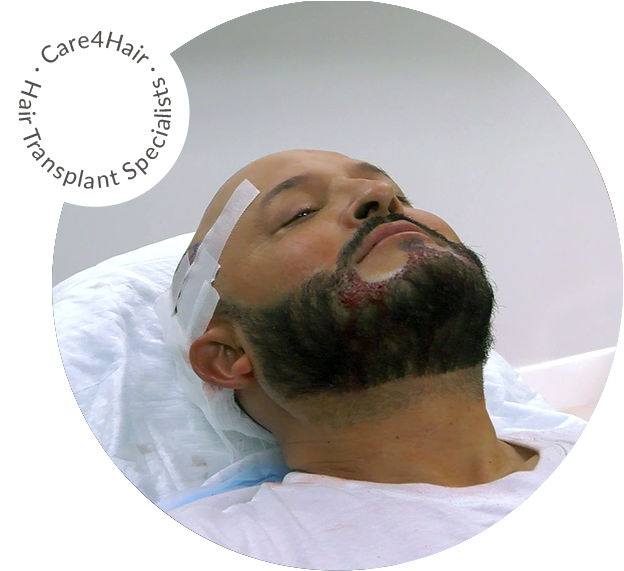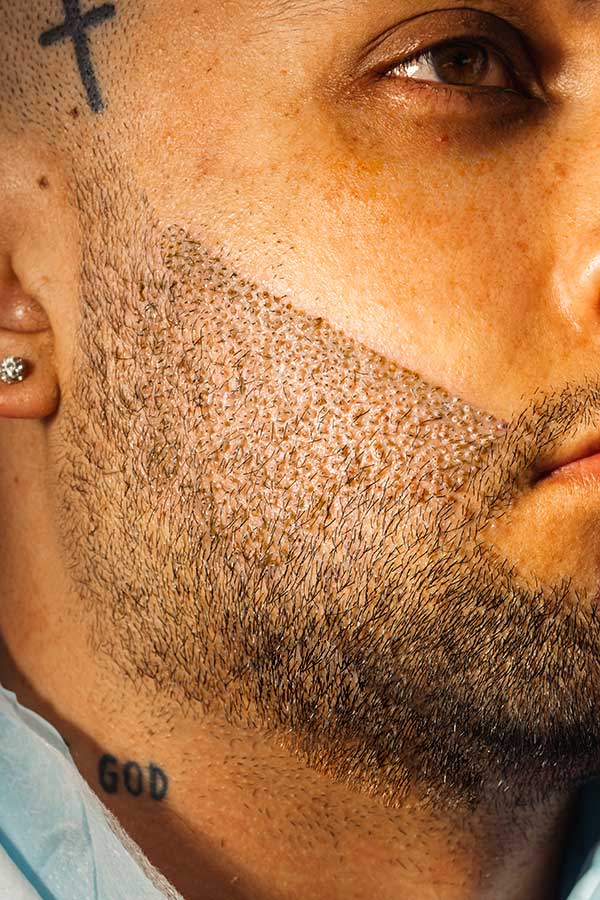
Mustache hair transplants are quickly becoming a popular option for those wishing to restore their facial hair and in areas with thinning or balding. This type of facial hair transplantation can be used to create a full, thick mustache and can also be used to fill in any sparse areas. This procedure has become increasingly popular due to its natural look and low risk of complications.
Mustache hair transplantation in Miami can be a great option for men who have experienced thinning or balding of their facial hair due to genetics, aging or trauma. The procedure involves taking healthy donor hairs from the head and carefully inserting them into small incisions on the face where hair growth has been lost

Generally, the best candidates for mustache hair transplant are those individuals who have significant baldness or thinning on their face, due to aging, genetics, trauma, or some medical conditions. Additionally, individuals with very thin or patchy facial hair may also be good candidates. The best way to determine if you are a candidate is to schedule an appointment with one of our experienced surgeons.
It is also important that candidates understand the potential risks associated with this procedure before agreeing to it. Generally speaking, people should not get facial hair transplants if they are pregnant or breastfeeding, have any kind of skin infection in the area to be transplanted, or have a history of blood disorders.

The number of grafts needed for a successful procedure will depend on the individual and several other factors such as the extent of baldness or thinning in the area and desired coverage area. However, generally speaking, an average mustache may need up to 1000 or even more grafts.




Mustache hair transplantation is performed under local anesthesia, and patients are typically awake during the procedure. The procedure involves the removal of healthy hairs from a donor area and then grafting them onto the bald or thinning areas of the facial hair. During this process, small incisions are made at the recipient site to receive each follicular unit (grafts) that are carefully extracted and preserved in saline solution. Next, specialized tools are used to carefully place each graft in its new location before securing it with sutures or surgical glue. Once all of the grafts have been placed, the treated area is covered with a bandage to protect it until healing has occurred.

Following your procedure, you may experience some temporary effects like swelling, bruising, and redness in and around your face. Don’t worry, these symptoms usually resolve within a few days and should subside completely in a week. In case of discomfort, your doctor may prescribe pain relief medication to make you feel better. To ensure a smooth recovery, follow all post-operative instructions carefully and avoid any strenuous activities or direct contact with the transplanted area. It’s important to limit sun exposure until your skin is fully healed. And remember – no touching or washing the transplanted hair for at least 10 days


Facial hair restoration is a big decision for many people, and at Care4Hair in Miami, we understand the importance of giving you the confidence to face the world with a full, healthy-looking mustache. We believe that restoring your youthful looks and grooming habits should be affordable and stress-free, and we are always happy to offer personalized advice on the process. That’s why we are committed to offering some of the most competitive prices for facial hair restoration in Miami. Our team of trained professionals can provide you with the highest quality results at an affordable price point.
For just $2.00 per graft, you can achieve a full and natural-looking mustache, and approximately 1,000 grafts are needed for the entire procedure. This translates to an approximate range of $2,000 to $2,500 for the entire procedure, which includes a thousand grafts.

Mustache hair transplantation is a safe and effective procedure with very few risks or complications. However, like all surgical procedures, some potential risks are associated with procedure. Patients may experience mild discomfort during or after the procedure as well as swelling or bruising of the treated area.
Finally, it is possible that new hair growth will not be as full or thick as desired. To reduce the risk of experiencing any adverse effects from the surgery patients should follow the advice provided by their surgeon before and after the procedure.